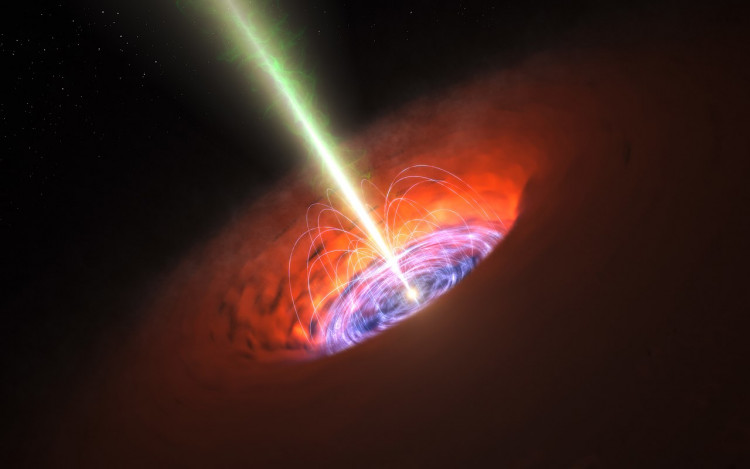A wild new theory suggests that wormholes, or portals between black holes, may be stable after all.
Physicists have dreamt about deep space travel utilizing shortcuts through the fabric of space and time since the early 20th century. By linking two different places in the universe, these theoretical wormholes might allow spacecraft to traverse the immense distances between celestial bodies.
Albert Einstein's revolutionary theory of general relativity, which portrays spacetime as a stretchy fabric bent and warped by gravity, predicts the existence of wormholes. Unfortunately, the same mathematics that predicts their existence also implies that wormholes will be extremely unstable and will collapse quickly.
However, a new paper in the Journal of Modern Physics D, which is still awaitng publication, proposes a bold solution to the black hole wormhole conundrum.
The Schwarzschild metric, named after German physicist and astronomer Karl Schwarzschild, is commonly used to define black holes.
Schwarzschild defined the event horizon as a radius around a black hole beyond which all concepts of time and space are thrown out the window. The black hole's gravity is simply too strong at the event horizon for any other force in the universe, not even light, to overcome it.
Nathan Rosen, a physicist, collaborated with Einstein to visualize how objects could pass through the event horizon and emerge on the other side. They came up with the idea of a white hole, which is a mirror image of a black hole and could theoretically create a spacetime tunnel.
Unlike a black hole, which does not allow anything to escape, these white holes would never allow anything to enter. These tunnels are known as the "Einstein-Rosen bridges" by physicists. Of course, these are all hypothetical, and the wormholes that form are unstable and prone to collapsing.
To solve this challenge, physicist Pascal Koiran of the Ecole Normale Supérieure de Lyon in France used the Eddington-Finkelstein metric to model wormholes.
This metric, according to a Live Science report, allows scientists to track a particle's path though a wormhole and out the other side. In principle, this would allow an object to pass through the event horizon and emerge in an other area of the universe without being lost.
"It is well known that a test mass falling into a black hole does not reach the event horizon for any finite value of the Schwarzschild time variable," the study reads." By contrast, we show that the event horizon is reached for a finite value of the Eddington-Finkelstein time variable."
However, there are still concerns: white holes are unlikely to exist, are unstable, and Einstein-Rosen bridges remain theoretical.
In the end, there's no certainty that wormholes will ever exist.





